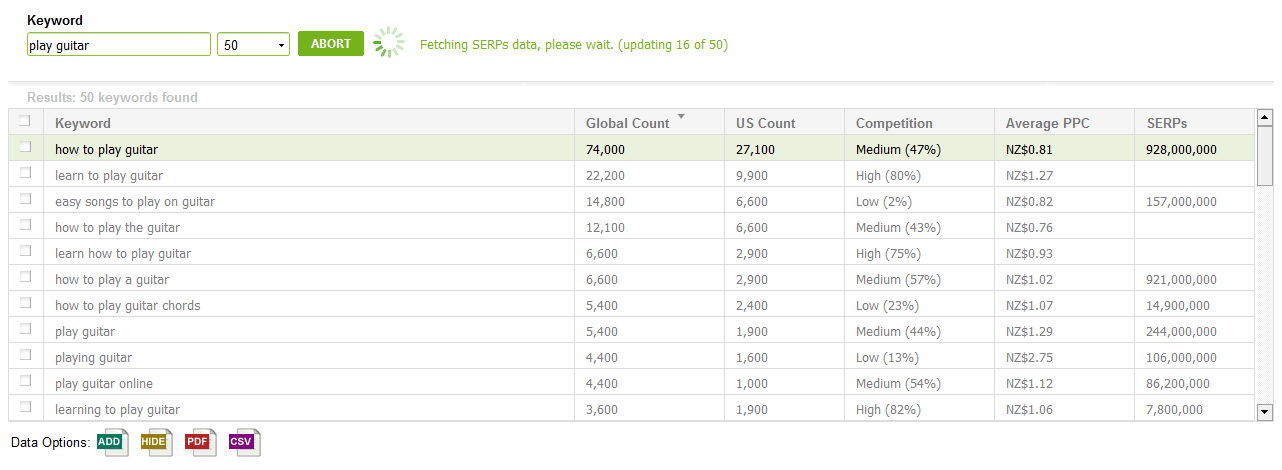Link Building Strategy for 2014
Happy New Year everybody! To give something back to you (my beloved readers) I’ve put together a list of some very powerful SEO strategies you might want to try in 2014. I’ve been working on some of these for a while, and hope you enjoy them.
Focus On White Hat Links
We all know that link building works, but that Google is also changing their approach to what constitutes good link building (and what isn’t so good). Straight from the horse’s mouth, Google is telling us they dislike “unnatural” link schemes.
This means you need to avoid the following link building methods that could be misconstrued as unnatural:
1) Using automated link building software
2) Guest posting on low-quality/recently-established blogs (I’m talking about mass scale guest posting with no thought about authentic quality)
3) Article directory marketing with submissions en masse and low quality content
4) Press releases that don’t actually announce anything news worthy
5) Basically anything designed to get you LOTS of links at the expense of quality
So how can you focus on white hat links that look as natural as possible? Try my personal method that I’ve been using for a while now with great results:
1) Get set up for AffiloTools, which has a powerful link finding software (notice I said that link building software is bad – link finding is great!). You can try the tool for a month free here.
2) Once you’ve set up your project navigate to the link finder tool
3) Enter your primary keyword and find all link types
4) Sort the results by domain authority (this helps you to find sites that are viewed as high quality by Google)
5) Check to see if the link can be built “manually” yourself – so if it’s a blog comment link opportunity, then make a comment … same goes for forum posts, website directories etc.
6) You’ll find that many of the most authoritative links offer no easy way of building them. The AffiloTools link finder will reveal natural, contextual links that indicate the site in question has organically linked to another as a resource. Now I love this type of inbound link because it denotes quality; which is what Google loves!
7) But how do you get links to your site from these hard-to-crack sources? EASY! Click through the existing link and see what the end content is – it could be something like a list of dog training tips that the webmaster has decided would be a useful resource for his/her readers, and has linked to it.
8) What you’re gonna do is take “inspiration” from that existing link’s content, but make your own content even bigger and better. If the current link offers 5 dog training tips, you should offer 10.
9) Once you’ve put this out-gunning content on your site, email the webmaster whose site the existing link resides on, and inform them that you have a better resource they can provide their readers with… with any luck the existing link will be replaced with one to your site!
10) You won’t get a 100% strike rate with this technique but it does serve to build your quality content base. However, the links you do build will be extremely powerful because they look highly organic and natural!
Remember to grab a month’s free membership to the Link Finding tool I use here.
When building links in this manner I find it really useful to focus on these factors:
1) Any link that is content-based must add value
2) Mix up targeted anchor text, generic anchor text, and naked URLs (I’m really liking using naked URLs at the moment actually)
3) If a site looks crap, don’t build a link on it!
4) Focus on the highest quality links first
Deploy a “Content Repurposing” Strategy
This is one of my favorite methods for getting maximum mileage out of any piece of content. Next time you write an article or blog post to your blog, make sure you do the following to repurpose your content for more links, traffic, and inbound power:
1) Add your new article to your site
2) If you have an email list, send a broadcast message to your subscribers encouraging them to read and share the article
3) Share your article on all relevant social networks
4) Now take your article and convert its main points into a Powerpoint/slideshow presentation – remember to focus on branding!
5) Submit this slideshow to Slideshare.net
6) Convert it into a PDF and submit to as many doc sharing sites as you can find
7) Using Camtasia and a good microphone, turn your slideshow into a screencapture video and submit it to your branded YouTube channel.
8) Extract the audio and turn this into a podcast – submit to your own branded podcast channel
9) Share the videos and audios on your social networks
10) Embed the video and Slideshare presentations (using embed function) into any Web 2.0 properties you have for more exposure.
Throughout this whole process remember to focus on building a brand!
Encourage More Social Sharing
By now you should have social sharing options configured on your site. I personally recommend keeping it simple, and only offer Twitter, Facebook, Google Plus (and LinkedIn will be rolled out soon). If you think your content is well-suited to Reddit, then you might want to consider adding that too.
According to Moz and other commentators/analysts, Google Plus shares were one of the biggest factors in rankings for 2013 … I personally think this is only going to expand as Google look to try and capitalize in the social media marketplace to a greater extent.
Therefore, every piece of content you create – whether it’s a blog post or video or podcast – needs to have a strong call to action to encourage social sharing.
In particular, you should really be focusing on getting more Google Plus shares. So if you have just created a video, for example, then add a short section to the end that encourages the viewer to go and share your content socially.
I personally love the approach of Ownage Pranks on YouTube, except this guy uses the call to action to get YouTube subscribers and likes (which are social signals themselves!)
Build Your Personal Brand
2012/2013 saw the ever-growing rise of branding as being critical for the success of SEO campaigns. Most SEO experts (myself included) believe that the future for small to medium businesses relies on building up a strong brand that has local/regional/national/international presence as relevant.
However, as a brand owner you should also be looking to build your personal brand. If you’re an SEO practitioner, then look to encourage your clients to do this.
I’m a firm believer in the power of having your own personal brand. Once your “company branded” website starts gaining traction, you’re going to have people searching up your name (or your client’s name). By having a strong personal brand you’ll be able to divert traffic back to the main company brand.
You’ll also establish yourself or your client as a niche/industry expert. This is really important for growing authority in crowded niches, and can help snag lucrative guest posting opportunities, guru interviews, and more.
I hope you’ve enjoyed my SEO strategy for 2014! If you only take a few key points away from this lesson, I want you to:
1) Focus on delivering the best quality content to your visitors in the most coherent, user-friendly format possible
2) Only focus on building natural, white hat links (using for example AffiloTools link finder)
3) Expand your social presence
4) Bonus tip: Have fun and enjoy the online lifestyle!
Share & Connect
If you’ve enjoyed this blog post, then I would really appreciate it if you share it using your preferred social network (I recommend Google Plus!) using the share button to the left.
If you’ve got any questions or comments, then fire away below as well.



